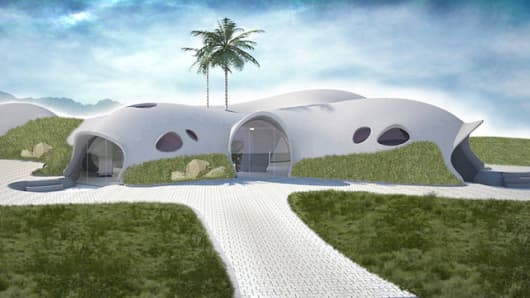Will peculiar looking domed homes made entirely of concrete revolutionize housing? Nicolo Bini, president and CEO of the construction technology company Binishells, certainly hopes so.
"The construction industry has to change, and buildings are so inefficient. They're not strong enough," he said. "They have to be built to be faster and more affordable and that's what we're going after and I think there's huge opportunities out there. The construction industry has been too stagnant for too long."





